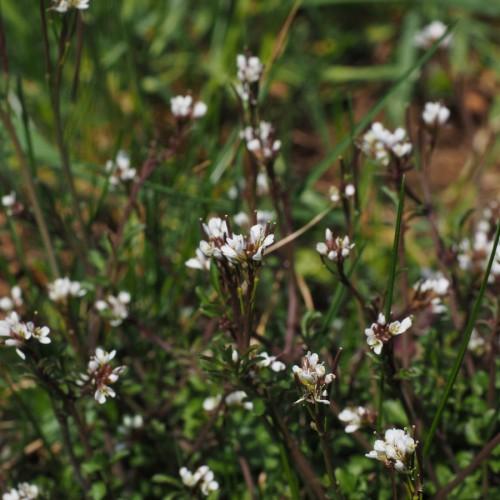
New Zealand Bittercress
Cardamine corymbosa
Watering:
Minimal
Hardiness Zone:
Sun:
full sun,part shade
Leaf:
Yes
Growth Rate:
Low
Drought Tolerant:
Yes
Salt Tolerant:
Yes
Invasive:
Yes
Care Level:
Medium
watering
New Zealand Bittercress requires frequent but light watering. Water the plant regularly, taking care not to over-water to prevent root rot. During the growing season, water when the surface of the soil appears to be dry. In hot weather, this could be as often as every other day. In cooler weather, water once a week. During the winter months, water less often as the plant enters its period of dormancy. Allow the top 2 inches of soil to dry out between waterings and water deeply when needed, providing enough moisture to reach the roots.
sunlight
New Zealand Bittercress prefers full sun exposure when grown outdoors. It requires at least 4 to 6 hours of direct sunlight each day for the best performance. As long as the plant is not scorching in direct sunlight, it can tolerate up to 8 hours a day. This will help to keep the bittercress compact and lush, with vigorous growth and a rich foliage display. In addition, the flowers will be more abundantly produced with adequate sunlight. When grown in part shade, New Zealand Bittercress is more likely to become sparser and less compact.
pruning
New Zealand Bittercress (Cardamine corymbosa) can be pruned regularly throughout the growing season to promote bushier growth and more flowers. Prune back any long stems to a set of healthy leaves after flowering, or before the plant starts to set seed. Pruning can also be used to trim the plant to a particular shape or size, to increase flowering or to reduce its size in the garden. It is best to prune in early morning when the plant is turgid and not wilted. Pruning shears should be used for smaller stems and branches, and loppers or hand pruners for harder wood. Make sure to cut back to a set of healthy leaves, as cutting too close can weaken the plant.
